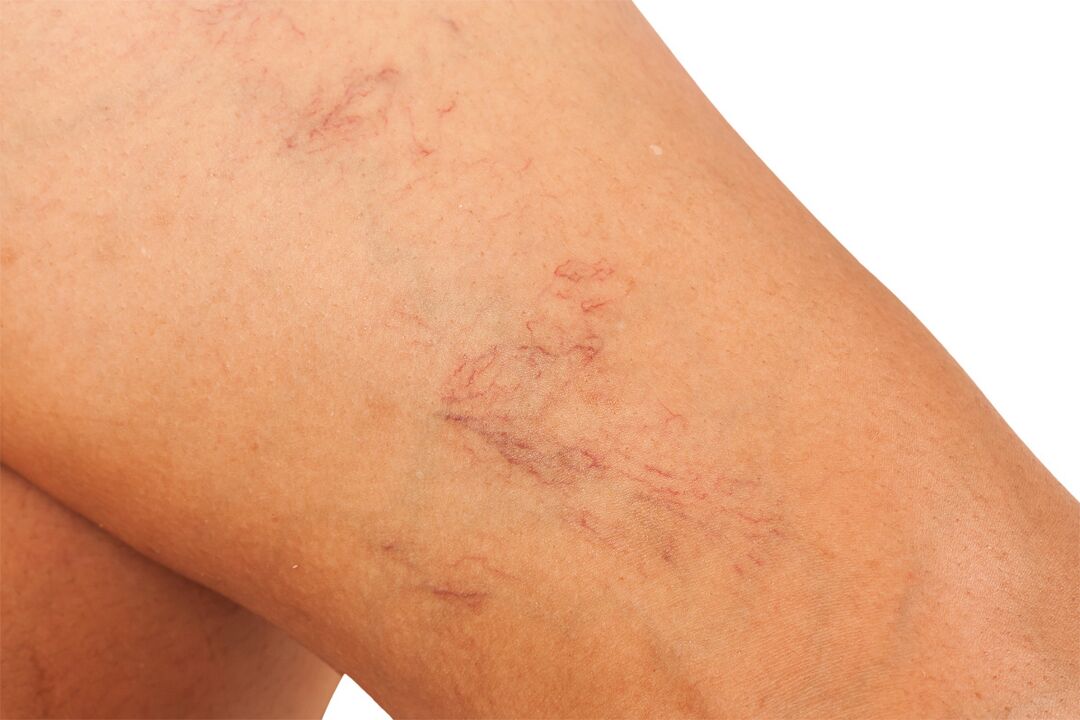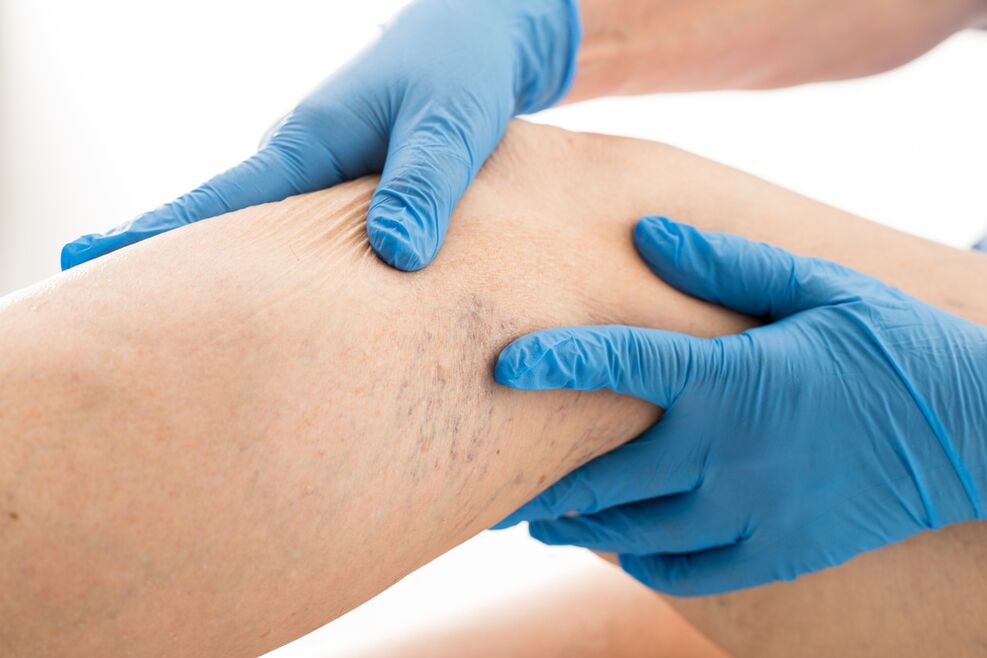Probably every third or even every second person today suffers from varicose veins of the legs or predisposes to it. This has become a real disaster, especially when you think about what is loading our feet to which they are subjected to today's civilized world. You need to know what varicose veins are dangerous before its first signs appear.
Varicose of the legs is a chronic disease in which the veins of the legs widen, creating nodes, resulting in the blood flow is impaired and the blood remains in the venous system. In the disease, the lumen of the veins widens as a result of blood flow from the legs into the veins, the veins on the legs have valves that pass only blood up, which prevents the blood from stagnation in the legs. If the operation of such valves is disturbed, then the blood begins to move respectively in a different direction, stagnation in the legs.
Among the causes of varicose veins of the legs are called the first, hereditary predisposition to this disease. If someone has varicose veins in your family, then the risk of getting sick for you is extremely high, as the disease is due to the hereditary weakness of the venous wall-one of the most common causes.
Varicose veins of the legs are a major female disease, as wearing high -level shoes increases the risk significantly. In addition, hormonal shakes are added to the fire during pregnancy or menopause, which also causes the veins to expand in women.
Most often, women on the legs are sick after forty -five years, but at a young age is often found. Most often, in adolescents or young people, the disease develops due to arterio-venous reports that open fistulas between the veins and the arteries.
The enlargement of the veins on the legs is found in men, of the nature of the profession, giving the feet a large load. This disease is often ill with people who lead a sedentary lifestyle, spend a lot of time standing, moving a little. Close -out shoes, as well as extra pounds, contribute to stagnation. Liver diseases such as cirrhosis or hepatitis can cause varicose veins on the legs.
This disease is also quite common among athletes, and this suggests that excessive physical activity can also provoke it.
At the initial stage, the symptoms of varicose veins of the legs are not obvious, the disease can occur imperceptibly. Or the signs of the enlargement of the veins are obvious - large winding veins on the legs begin to protrude under the skin, but one does not experience any pain. Vienna can manifest itself, stick through the skin gradually, and can manifest itself after hard exercise or hard work. It happens that the veins appear suddenly after a person has spent all day on his feet in the heat.
But if, when you examine the lower leg, you noticed that the veins under the skin become thick, that there are places with knit extensions, and the veins themselves swell as you stand and fall when you go to bed, you probably start varicose veins.
Another symptom is swelling of the legs during the day while sitting, standing, walking, as well as reducing the swelling in the supine position.
A bright characteristic of the disease is the pigmentation of the inner surface of the legs - the skin is compacted, it becomes less elastic, it acquires a painful shine. In areas with such skin, the hair falls out.
Varicose is also characterized by a constant feeling of fatigue in the legs, pain and burning. One is quickly tired, sometimes convulsions are noticed.
Varicose is diagnosed in the examination of a specialist surgeon, as well as on the basis of Uzu veins. Phlebography is also performed, that is, contrasting coloring substances are introduced into the blood and after which the veins are studied.
Treatment depends on what stage the disease is and whether the disease is accompanied by complications. Treatment can be based on conservative and surgical methods. Conservative means wearing socks or tights, the use of medicines with indoor and outdoor use. Conservative treatments also include sclerotherapy and laser irradiation. In particularly complex cases, the veins are surgically removed.
A person who suffers from varicose veins of the legs should know that in the event of a sudden enlargement of the legs in the legs, fever and sealing of the skin, it is necessary to call a doctor urgently. Such an attack can be accompanied by shortness of breath, a feeling of lack of air, weakness, and bleeding.
Expert opinion: How is this related to varicose veins? There is a trump of a varicose vein, the inflammation of the blood clots is thrombophlebitis. This disease can occur at fever. Part of the thrombus can break away and enter the pulmonary artery, which will lead to shortness of breath and more developing serious symptoms of life.
Not in such cases with home treatment - call a doctor.
The most effective and radical method for treating varicose veins on the feet is, of course, surgery. The surgery resorts to if conservative treatments are ineffective. The essence of the surgery comes down to the fact that through small skin cuts on the skin, the surgeon removes varicose veins. Then the leg is thoroughly tied and after a few hours the patient can stand a lot and even walk. This is probably the only guaranteed way to get rid of the serious effects of the disease.
Folk remedies can help in the course of treatment with traditional methods or alleviate the patient's condition. So, the main components of creating medicinal ointments are:
horse chestnut; Kalanchoe; Sagebrush; white willow crust; Wet; Sealandin; Cabbage. Popular animal fat -based products, apple cider vinegar, beekeeping products (honey, propolis), body, clay and other components will also help cure the disease.
The effects of varicose veins The varicose veins of the legs cannot be left by themselves, it must be treated because, developed, this disease can lead to very unpleasant and sad consequences. So varicose veins can be complicated by eczema and dermatitis - inflammatory skin diseases of the feet, the cause of which is precisely the stagnation of venous blood. Eczema is characterized by the appearance of foci of redness on the skin, and the edges of this redness are uneven, the skin in these places itching and cracks or bubbles appear.
Extended eczema, in turn, can develop in a trophic ulcer. Trophic ulcer is also a complication of varicose veins - it is an ulcer that does not cure the skin at the lower leg for a long time. The trophic ulcer begins with a shallow ulcer characterized by a bloody or transparent fluid at the bottom. It is an extremely painful wound that can completely ruin a person's life - leads to a violation of life, sleep.
One of the most common complications of varicose veins of the legs is thrombophlebitis, that is, inflammation of the vein, accompanied by the formation of a blood clot or blood clot. Thrombophlebitis is usually accompanied by severe walking pain, fever, redness of the skin and formation of a seal. With thrombophlebitis, vein ruptures are possible at the site of expansion, resulting in bleeding. In this case, you should call a doctor immediately.























